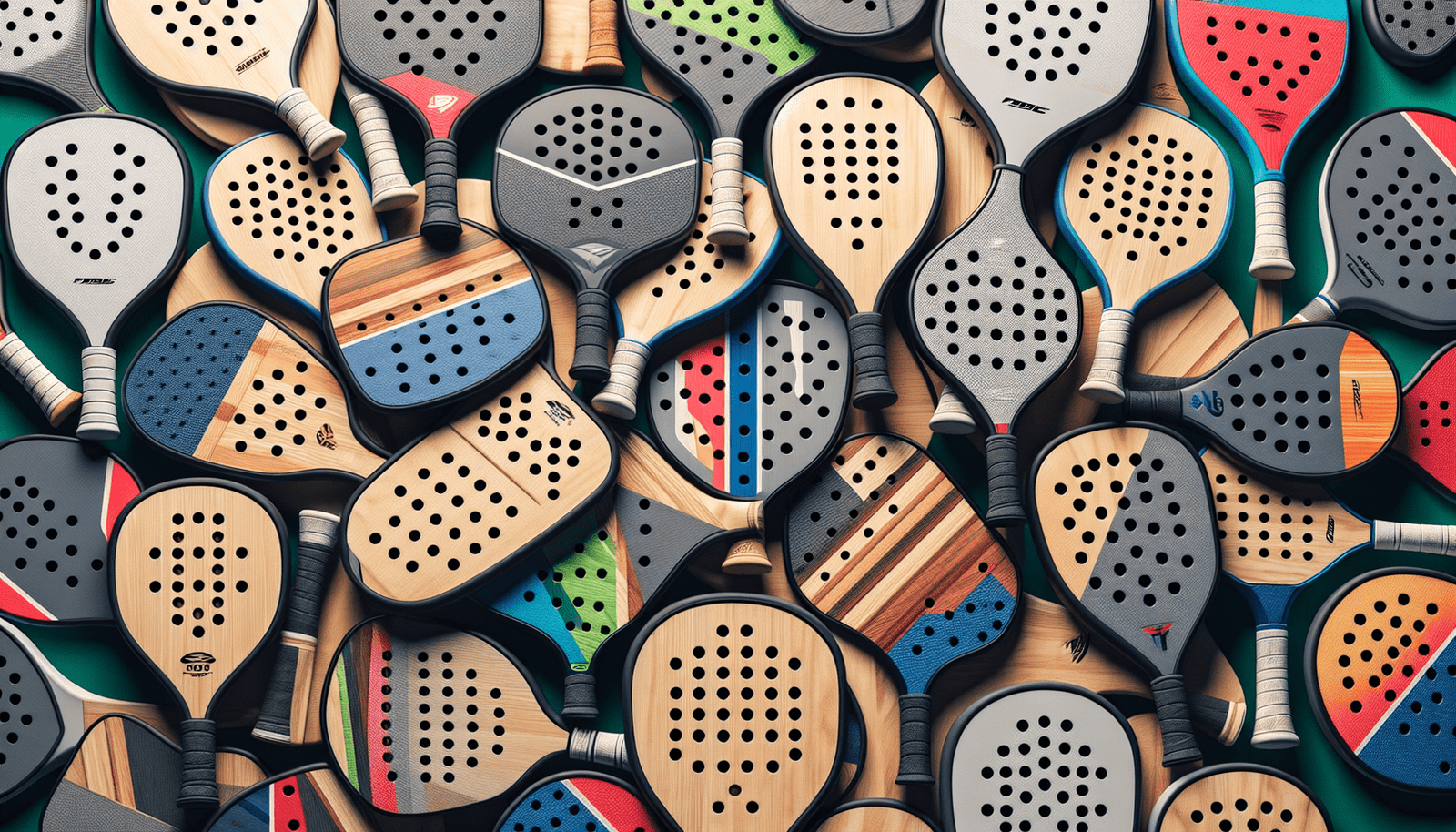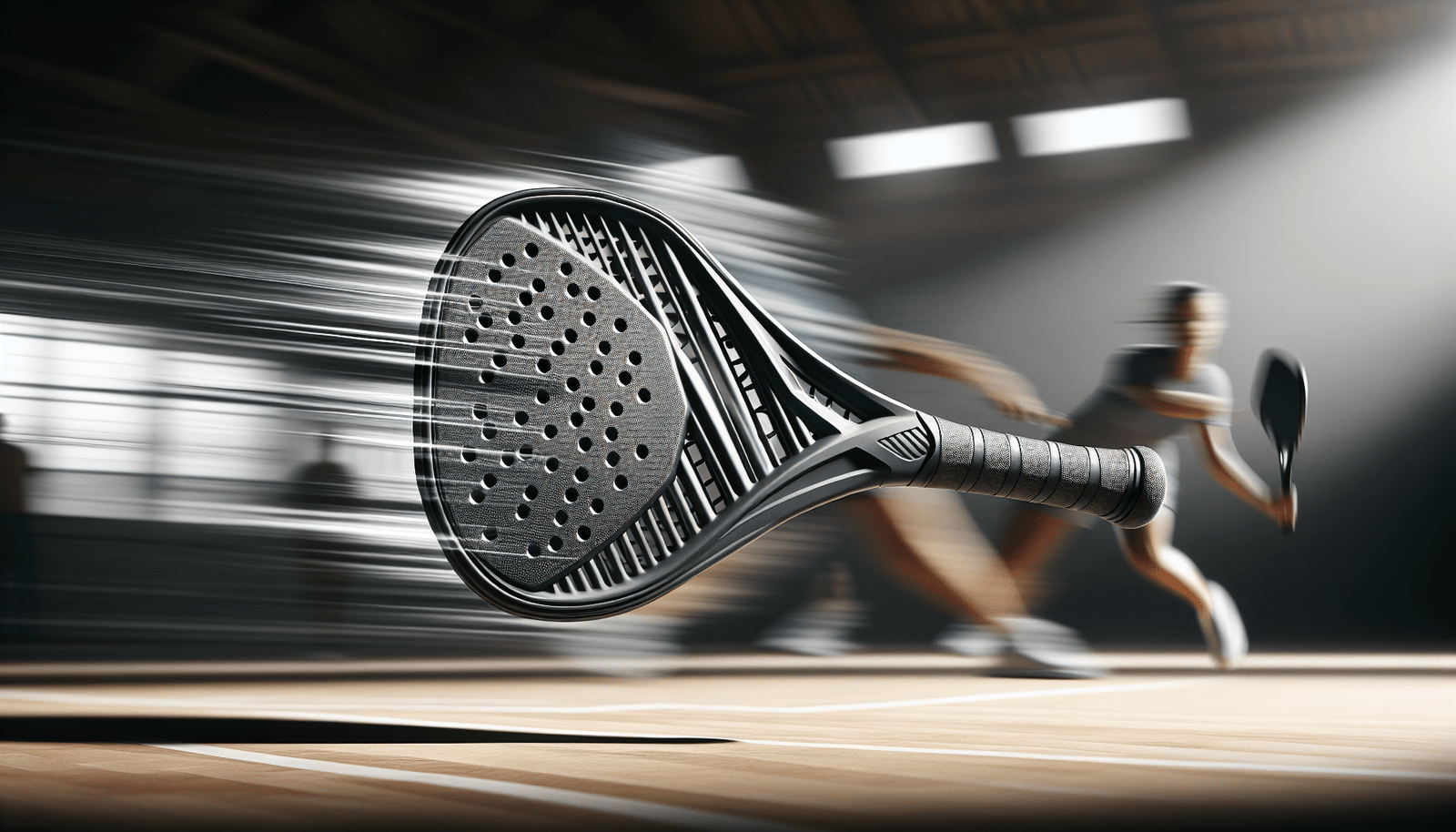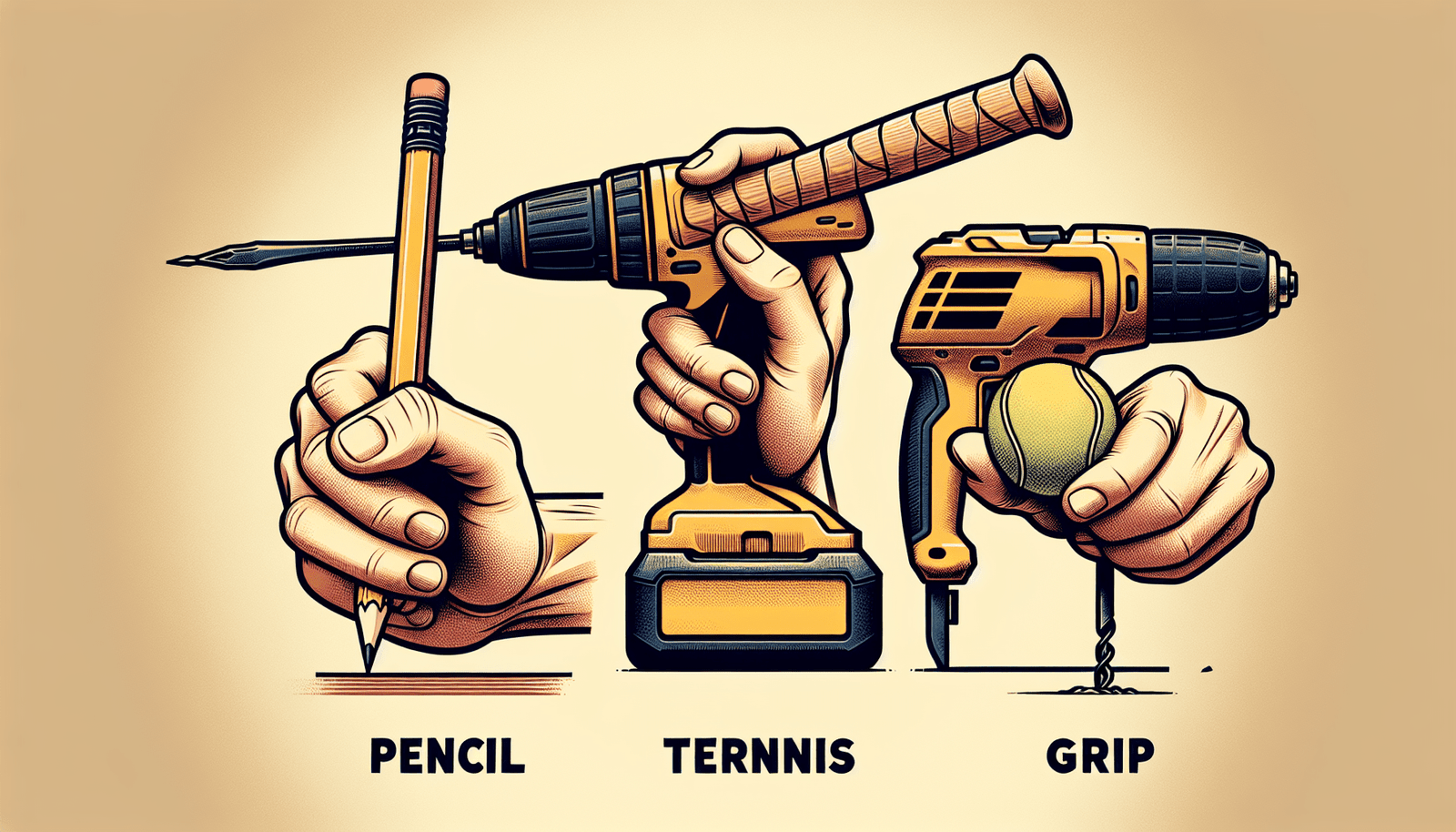Are you just getting started with pickleball and feeling overwhelmed by all the different choices of paddles out there? Well, fear not! When it comes to choosing the right weight for your pickleball paddle, we’ve got you covered. Whether you prefer a lighter paddle for quick maneuverability or a heavier one for increased power, this article will provide you with some helpful tips and guidelines to make the decision-making process a breeze. So, let’s dive in and find the perfect weight that will elevate your pickleball game to new heights!
Understanding the Importance of Weight in Pickleball Paddles
The role of weight in paddle performance
When it comes to pickleball paddles, weight plays a crucial role in determining their overall performance on the court. The weight of a paddle affects many aspects of your game, such as power, control, maneuverability, and even the amount of strain you put on your arm and shoulder while playing. Understanding how weight impacts these factors is essential in choosing the right paddle that suits your playing style and skill level.
How weight affects your game
The weight of your paddle can significantly impact your game in several ways. A lighter paddle allows for increased swing speed, which can be advantageous in situations where quick reactions are necessary. It also enhances maneuverability, making it easier to perform intricate shots and swiftly change directions. On the other hand, a heavier paddle provides more power and stability, allowing for stronger shots and better control over the ball. The weight of your paddle can also affect the amount of vibration and shock absorption, which can influence your comfort and overall playing experience.
Finding the right balance
Finding the right balance between the weight of your pickleball paddle and your playing style is crucial for optimal performance on the court. It is essential to consider your playing style, ability, and preferences when choosing the weight of your paddle. Additionally, various factors, such as the materials used in the paddle’s construction and weight distribution, should be taken into account. By understanding these considerations and assessing your individual needs, you can determine the optimal weight range that will complement your gameplay.
Consider Your Playing Style and Ability
Analyzing your playing style
To choose the right weight for your pickleball paddle, it is crucial to analyze your playing style. Are you an aggressive player who relies on power and strong shots? Or do you prefer a more defensive style, focusing on control and finesse? Understanding your unique playing style will help determine whether a lighter or heavier paddle is more suitable for you. Aggressive players may benefit from the added power and stability of a heavier paddle, while defensive players might prefer the maneuverability and quick reactions provided by a lighter paddle.
Assessing your strength and endurance
Your physical strength and endurance also play a role in determining the ideal weight for your pickleball paddle. If you have good upper body strength and endurance, you may find it easier to handle a slightly heavier paddle, as you will have the power to control and maneuver it effectively. However, if you have limited strength or endurance, a lighter paddle might be more suitable to prevent strain or fatigue during extended gameplay. Assessing your own physical capabilities will help you find the right weight range that allows you to perform optimally without straining your body.
Matching weight to your skill level
Your skill level in pickleball is another factor to consider when choosing the weight of your paddle. Beginners often benefit from using a lighter paddle as it allows for greater maneuverability and control while they are still mastering their technique. As your skill level progresses, you might consider transitioning to a slightly heavier paddle to increase power and stability. However, it is important to note that the weight of the paddle should never be a hindrance to your development and enjoyment of the game. Always choose a paddle weight that you feel comfortable with and that complements your skill level.
Factors to Consider When Choosing Paddle Weight
Head-heavy or head-light paddles
One important factor to consider when selecting a pickleball paddle weight is whether it is head-heavy or head-light. A head-heavy paddle has more weight concentrated in the head, providing additional power and stability. This type of paddle is generally preferred by players who rely on powerful shots or need extra control. On the other hand, a head-light paddle has less weight in the head, making it easier to maneuver and allowing for quicker reactions. This type of paddle is often favored by players who prioritize agility and finesse in their gameplay.
Impact on power and control
The weight of your paddle directly affects the power and control you have over your shots. Heavier paddles typically generate more power, allowing you to hit the ball with greater force. This can be advantageous for players who rely on strong shots or who prefer a more aggressive style of play. Conversely, lighter paddles offer more control and finesse, enabling players to execute precise shots and maintain better ball placement. Carefully considering the importance of power versus control in your gameplay will help determine the ideal weight for your paddle.
Effects on maneuverability
The maneuverability of your paddle, or how easily you can move and adjust it during gameplay, is influenced by its weight. Lighter paddles are generally easier to maneuver, allowing for quick reactions and swift changes in direction. This can be beneficial for players who prioritize agility and the ability to respond rapidly to their opponent’s shots. Heavier paddles, on the other hand, may be slightly more challenging to maneuver but can provide additional stability and control. Assessing your playing style and preferences for maneuverability will help guide your paddle weight selection.
Vibration and shock absorption
The weight of your pickleball paddle can also affect the levels of vibration and shock absorption during gameplay. Lighter paddles tend to absorb less shock and may transmit more vibrations to your arm and shoulder. This can potentially lead to increased strain or discomfort, especially during extended play. Heavier paddles, on the other hand, often offer better shock absorption and can help reduce the impact on your arm and shoulder. It is important to consider your own comfort and any existing conditions when evaluating the vibration and shock absorption properties of different paddle weights.
Determining the Optimal Weight Range for You
Testing different paddle weights
Determining the optimal weight range for your pickleball paddle often requires trial and error. It can be helpful to test paddles of various weights to gauge how they feel during gameplay. Some sporting goods stores or clubs may offer demo paddles that you can borrow for a short period to test on the court. By trying out different weights, you can assess their impact on your swing speed, maneuverability, power, and comfort. This hands-on approach will provide valuable insights into which weight range suits your playing style and preferences.
Comfort and feel during gameplay
During your testing phase, it is important to pay attention to your comfort and how the various paddle weights feel in your hands during gameplay. A paddle that feels too heavy or too light for your liking might affect your technique and overall enjoyment of the game. Consider factors such as the paddle’s grip size, balance, and overall feel when making your decision. Opt for a weight that feels comfortable and natural in your hands, allowing you to perform your best without unnecessary strain or discomfort.
Finding the sweet spot
Ultimately, finding the optimal weight for your pickleball paddle involves finding the “sweet spot” that maximizes your performance and enjoyment on the court. It may take some experimentation and adjustment to find the perfect balance between power, control, maneuverability, and comfort. Keep in mind that your ideal weight range might change as your playing style and skill level evolve. Regularly reassessing your paddle choice and being flexible in adapting to different weights will allow you to continually optimize your gameplay.
Effects of Lighter Paddles
Advantages of lighter paddles
Opting for a lighter pickleball paddle comes with several advantages. The lightweight nature of these paddles allows for increased swing speed, enabling quicker reactions and more powerful shots. This can be particularly beneficial in situations where speed and agility are key, such as during fast-paced rallies or when defending against strong shots. Lighter paddles also provide enhanced maneuverability, allowing players to perform advanced shots, such as dinks and drop shots, with greater precision. Additionally, the reduced weight can result in less strain on the arm and shoulder, especially during long matches or extended practice sessions.
Increased swing speed
One of the primary benefits of using a lighter paddle is the increased swing speed it enables. With less weight to move, you can generate faster racquet head speed, translating into more power and force behind your shots. This becomes especially advantageous when you need to react quickly to fast-paced shots or when trying to generate additional power in your swings. The increased swing speed afforded by a lighter paddle can give you a competitive edge on the court, allowing you to respond swiftly to your opponent’s moves and execute shots with greater velocity.
Enhanced maneuverability
Lighter paddles offer enhanced maneuverability, allowing you to make quick adjustments during rallies and execute shots with greater finesse. The reduced weight makes it easier to change directions rapidly, enabling you to reach difficult shots and return them accurately. This maneuverability is particularly useful when playing close to the net, as it allows for better control and precision during dinks and drop shots. Lighter paddles can provide the necessary agility to outmaneuver your opponents and keep them off balance, giving you a strategic advantage during gameplay.
Less strain on arm and shoulder
Using a lighter paddle can help reduce strain on your arm and shoulder during extended play. The decreased weight puts less pressure on your muscles and joints, minimizing the risk of fatigue or injury. This is especially beneficial for players with arm or shoulder issues or those who tend to experience discomfort during long matches. By choosing a lighter paddle, you can enjoy extended play without sacrificing comfort or increasing the risk of overuse injuries. The reduced strain on your arm and shoulder allows you to focus on your game without distraction and play at your highest level for more extended periods.
Effects of Heavier Paddles
Advantages of heavier paddles
Heavier pickleball paddles offer several advantages that can greatly enhance your gameplay. The additional weight provides more power behind your shots, allowing you to hit the ball with greater force. This is advantageous for players who rely on strong shots to overpower their opponents or control the pace of the game. Heavier paddles also offer increased stability, minimizing any unwanted vibrations and providing a solid feel during impact. This stability can help improve shot accuracy and overall control, allowing for more precise ball placement. Additionally, the added weight can aid in reducing vibration and shock absorption, resulting in a smoother feel and less strain on your arm and shoulder.
Greater power and stability
One of the main advantages of using a heavier paddle is the enhanced power it brings to your shots. The additional weight allows you to generate more momentum and impact behind the ball, resulting in stronger shots and deeper returns. This can be particularly advantageous when playing against opponents who rely on fast, aggressive shots, as the added power can help you match their intensity and counter their attacks effectively. Additionally, the increased weight offers greater stability during shots, reducing any unwanted paddle movement and providing a solid, consistent feel. This stability allows for improved shot control and better accuracy, granting you the confidence to execute shots with precision.
Improved shot control
Heavier paddles offer improved shot control, allowing you to execute shots with greater accuracy and finesse. The additional weight provides a more solid feel during impact, minimizing any unwanted vibrations and allowing for a cleaner shot. This stability and control become particularly essential when performing delicate shots, such as dinks or drop shots, where precision is paramount. The added weight helps absorb and dissipate the energy from the ball, giving you greater command over ball placement. With better shot control, you can strategically maneuver the ball on the court and exploit your opponent’s weaknesses, ultimately gaining a competitive advantage.
Reduced vibration and shock
Heavier paddles often provide better vibration and shock absorption, resulting in a smoother feel during gameplay. The additional weight helps dampen the impact energy from the ball, reducing the risk of discomfort or strain on your arm and shoulder. This is especially useful if you have a history of arm or shoulder issues or are prone to experiencing vibrations during play. By choosing a heavier paddle, you can enjoy a more comfortable and stable playing experience, ensuring that you can focus on your game without any unwanted distractions. The reduced vibration and shock promote better arm and shoulder health, allowing for extended play with minimal fatigue.
Considering Material and Construction
The impact of materials on weight
When selecting a pickleball paddle, it is essential to consider the materials used in its construction, as they can significantly impact the paddle’s weight. Different materials have varying densities and properties, which influence the overall weight of the paddle. Popular materials used in pickleball paddle construction include graphite, aluminum, and various composites. Graphite paddles tend to be lightweight, making them suitable for players who prefer the advantages of a lighter paddle. Aluminum paddles, on the other hand, can be heavier and offer more power and stability. Composite paddles combine different materials, often resulting in a balanced weight that meets the needs of a wide range of players. Understanding the impact of different materials on weight can help guide your paddle selection process.
Composite paddles vs. graphite or aluminum
Composite paddles, graphite paddles, and aluminum paddles each have their own distinct characteristics and weight profiles. Composite paddles, as the name suggests, are made from a combination of materials, such as fiberglass, carbon fiber, and polymer cores. They offer a balance between power, control, and maneuverability, making them popular among a wide range of players. Graphite paddles, on the other hand, tend to be lightweight and provide increased swing speed and maneuverability. They are often favored by players who prioritize agility and finesse. Aluminum paddles, although less common, can offer additional weight and stability, making them suitable for players seeking a paddle with more power. Considering the pros and cons of each material and how they align with your preferences will help you choose a paddle with the optimal weight for your gameplay.
Weight distribution in different paddle cores
The weight distribution within a pickleball paddle also contributes to its overall feel and performance. Paddles can have different core constructions, such as honeycomb cores or polymer cores, which can affect weight distribution. Traditional honeycomb cores typically distribute the weight evenly throughout the paddle, providing a balanced feel and versatility for various playing styles. Polymer cores, on the other hand, can offer a more concentrated weight distribution, often resulting in a head-heavy feel. This weight distribution can provide additional power and stability, but it may also impact maneuverability. Understanding the weight distribution characteristics of different paddle cores will help you find the ideal weight and balance that suits your playing style and preferences.
Handling Special Circumstances
Adapting paddle weight due to injury
In the unfortunate event of an injury, it may be necessary to adapt the weight of your pickleball paddle to accommodate your recovery and prevent further strain or discomfort. If you are experiencing arm or shoulder issues, a lighter paddle may help reduce the load on affected muscles and joints, minimizing the risk of exacerbating the injury. However, it is important to consult with a healthcare professional or physical therapist for proper guidance. They can provide personalized recommendations based on your specific injury and recovery needs. Adapting your paddle weight appropriately during the recovery process will allow you to continue enjoying the game while promoting healing and preventing further damage.
Adjusting for wind conditions
Playing pickleball in windy conditions can present additional challenges, as the wind can affect the flight path of the ball. In such situations, adjusting the weight of your paddle can help counterbalance the wind’s impact and maintain better control over your shots. A slightly heavier paddle offers increased stability, making it easier to control the ball’s trajectory and resist the wind’s influence. By using a paddle with more weight, you can minimize the chances of the wind disrupting your shots and maintain better consistency in your gameplay. Being adaptable to different weather conditions by adjusting your paddle weight can significantly improve your performance on windy days.
Considering temperature effects
Extreme temperature conditions can affect the weight of your pickleball paddle and consequently, your gameplay. In colder temperatures, materials tend to contract, potentially making a paddle feel slightly heavier. Conversely, in hotter temperatures, materials expand, resulting in a possibly lighter feel. Being aware of these temperature effects can help you anticipate and adjust accordingly. If you typically play in extreme temperatures, you might consider selecting a paddle weight with this in mind. This awareness will allow you to adapt your gameplay and maintain consistent performance, regardless of the temperature conditions.
Seeking Expert Opinions and Recommendations
Consulting with knowledgeable players
Seeking advice from knowledgeable players can provide valuable insights into choosing the right weight for your pickleball paddle. Engaging in conversations with experienced players who have a similar playing style or skill level can help you gain practical perspectives and recommendations. They may offer insights based on their own experiences and trials with different paddle weights. By understanding their preferences and reasons for choosing specific paddle weights, you can broaden your knowledge and make a more informed decision.
Asking for advice from pickleball coaches
Pickleball coaches are excellent resources for guidance on choosing the right paddle weight. They possess in-depth knowledge and experience in the sport and can analyze your playing style, strengths, and weaknesses to make appropriate recommendations. Pickleball coaches can provide personalized advice based on your specific needs and goals, taking into account factors such as your skill level, physical capabilities, and playing preferences. Their expertise will help you narrow down the weight range that aligns best with your requirements, ultimately improving your overall performance on the court.
Reading product reviews and testimonials
Another effective way to gather information and insights about different paddle weights is to read product reviews and testimonials. Many websites or specialized pickleball forums provide reviews from fellow players who have tested various paddles. Reading these firsthand accounts can offer valuable perspectives on the advantages and disadvantages of different paddle weights, as well as insights into their performance in different playing situations. However, it is important to consider a range of reviews to get a comprehensive understanding, as individual experiences and preferences can vary. By reviewing multiple opinions and testimonials, you can gather a wealth of information and make a more informed decision regarding your paddle weight choice.
Trial, Error, and Adaptation
Taking time to experiment
Choosing the right paddle weight often involves a process of trial and error. Different players have unique playing styles, physical capabilities, and preferences, making it essential to experiment with various weights to find the optimal fit. Take the time to test different paddles, varying weights, and even combinations of materials to determine how they affect your gameplay. By allowing yourself the freedom to experiment, you can gain valuable insights into what works best for you and your style of play. Embrace the experimentation process as an opportunity to learn more about yourself as a player and to continually improve your gameplay.
Being open to adjusting weight
Being open-minded and flexible when it comes to adjusting your paddle weight is crucial for continual growth and improvement. As your playing style, skills, or physical condition change, it may become necessary to modify the weight of your paddle to ensure optimal performance. Be willing to reassess and adapt your paddle weight as needed to accommodate these changes. By actively remaining open to adjustments, you can stay ahead of the game and make the most of your potential on the court.
Continuously reassessing your paddle choice
Your paddle choice and weight selection are not set in stone. It is important to continuously reassess and evaluate your choice, even after you have settled on a specific weight range. As you progress as a player, you may develop new skills, refine your technique, or encounter different playing environments that prompt a reevaluation of your paddle weight. Regularly reassessing your paddle choice allows you to fine-tune your equipment to match your evolving needs and aspirations. Stay in touch with your own progress and the changes in your game, and be willing to make adjustments to optimize your performance.
Choosing the right weight for your pickleball paddle is a critical decision that can significantly impact your gameplay and overall enjoyment of the sport. By considering factors such as your playing style, physical abilities, and personal preferences, you can narrow down the weight range that suits your needs. Testing different paddle weights, seeking advice from experts, and being open to adaptation will help guide you towards the optimal weight that allows you to excel on the pickleball court. Remember, the right weight for your paddle is a personal choice that should align with your unique playing style and enhance your overall experience.




